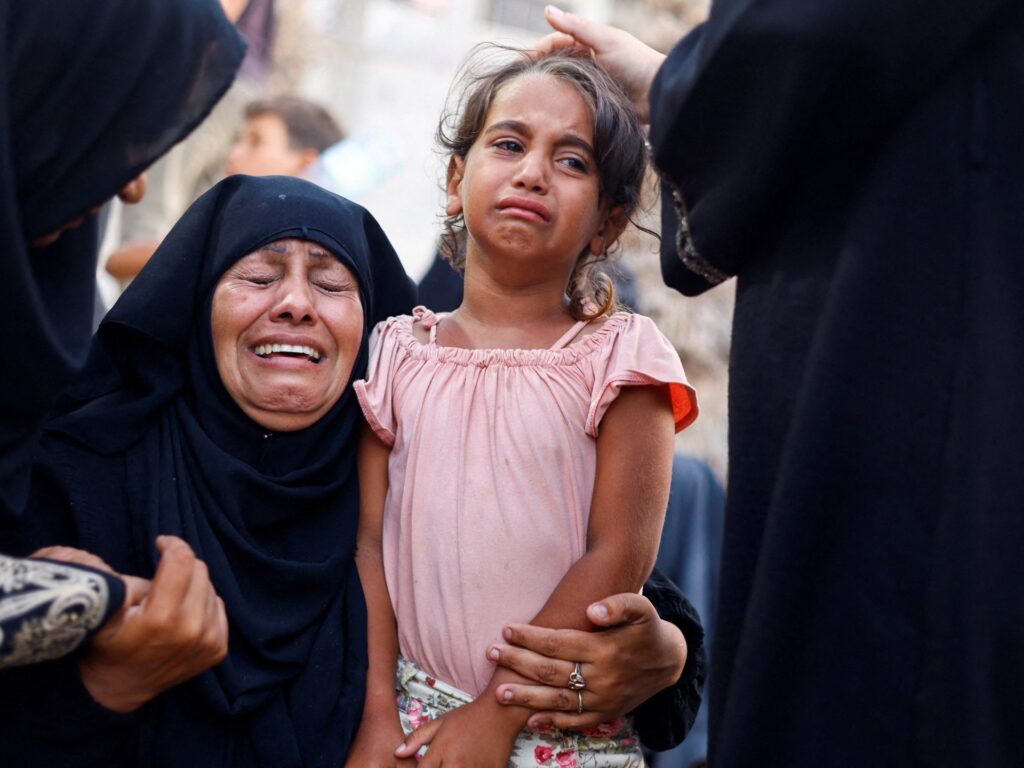The explosions are the signal.
Boom. And again: boom.
I know immediately that a massive influx of patients is imminent.
On 21 June, in the coastal area of al-Mawasi, at the southern tip of the Gaza Strip, dozens of people were killed and dozens more injured when hostilities reached a camp for displaced people located near the premises of the International Committee of the Red Cross (ICRC). Minutes later, the nearby Red Cross field hospital, where I work as a senior doctor, began receiving patients.
That afternoon, I was sitting in the hospital’s administrative area in a meeting about staffing and scheduling when we heard a particularly loud explosion.
The shock wave hit me. The walls of the hospital tent shook from the shock wave. We quickly understood what was coming and most of the staff – local Palestinians and foreigners – went to the emergency room to prepare.
But there was no time to prepare. In the chaos of war, one adapts.
I stood at the entrance of the hospital as ambulances roared in, sometimes stopping abruptly, as paramedics crowded around to grab the gurney, directing each patient to the appropriate area of our hospital, categorized by color.
The Red Zone: A young man with one arm hanging by flaps of skin at the shoulder, shrapnel wounds to the chest and abdomen. Immediate care required. Life-threatening. Amputation likely.
The Yellow Zone: A toddler screaming in pain, all limbs attached but a clean fracture, bleeding from shallow cuts. X-ray and splint needed, maybe stitches.
The Black Zone: A corpse, so burned that it is unrecognizable, wrapped in a sheet and sent to our morgue.
That day, more than 50 wounded arrived at our field hospital and despite all our efforts, eight of them died after their arrival. The bodies of 14 people, already dead, were also brought to us.
The doctors and nurses I work with are no strangers to what are called mass casualty emergencies, critical situations that typically exceed standard capabilities in terms of equipment and personnel. Unfortunately, that week we experienced three such events.
When this happens, we focus on our work: caring for those in need. Under heated tents, you analyze, you operate, you sew.
Nearby, gunshots and explosions ring out, adding an element of fear to patients who have already experienced horror. Those who are conscious may be panicked or frightened. Some are speechless – in shock – or screaming for their families. Some need to be sedated.
After helping one patient, you move on to the next bed. You assess, you measure, you put on a cast. Then the next one. All around you, family members are screaming, people are crying, passersby are yelling. The staff, though clearly traumatized, continue to work.
Six minutes before patients arrive
Hospitals, even those made of canvas or tarpaulin, are considered safe havens in times of war. Under international humanitarian law, hospitals are protected places, so that those in need can receive medical care and treatment.
In a place like Gaza, where no civilian feels safe, this creates a catch-22 situation. People want to be close to the hospital to feel less exposed. At the same time, we have limited space and we are trying to respond to large-scale emergencies where dozens of people’s lives are at risk.
Usually, before a massive influx of patients, there is time to gather staff and assign roles, set up triage beds and first aid kits with extra equipment, and do a quick situation check. But this week, because the explosions happened so close to the field hospital, patients started arriving within six minutes.
The injuries are similar to those we have seen since the field hospital opened in mid-May near the city of Rafah, and that we have seen throughout the Gaza Strip since October. Some may recover physically, others will live without limbs. But the psychological burden, especially for children, is so great that it will remain there for years. It is always a great source of worry, and I am not about to get bored.
Some of those injured on June 21 will require further surgery. Many will need physiotherapy and mental health support to recover.
Once the patients are treated, we clean, repack boxes of new equipment, talk to families and take stock. The staff is traumatized by what they have seen, but knows that the only thing they can do, for now, is care for the patients still in the hospital and rest as much as possible – before the next emergency.

